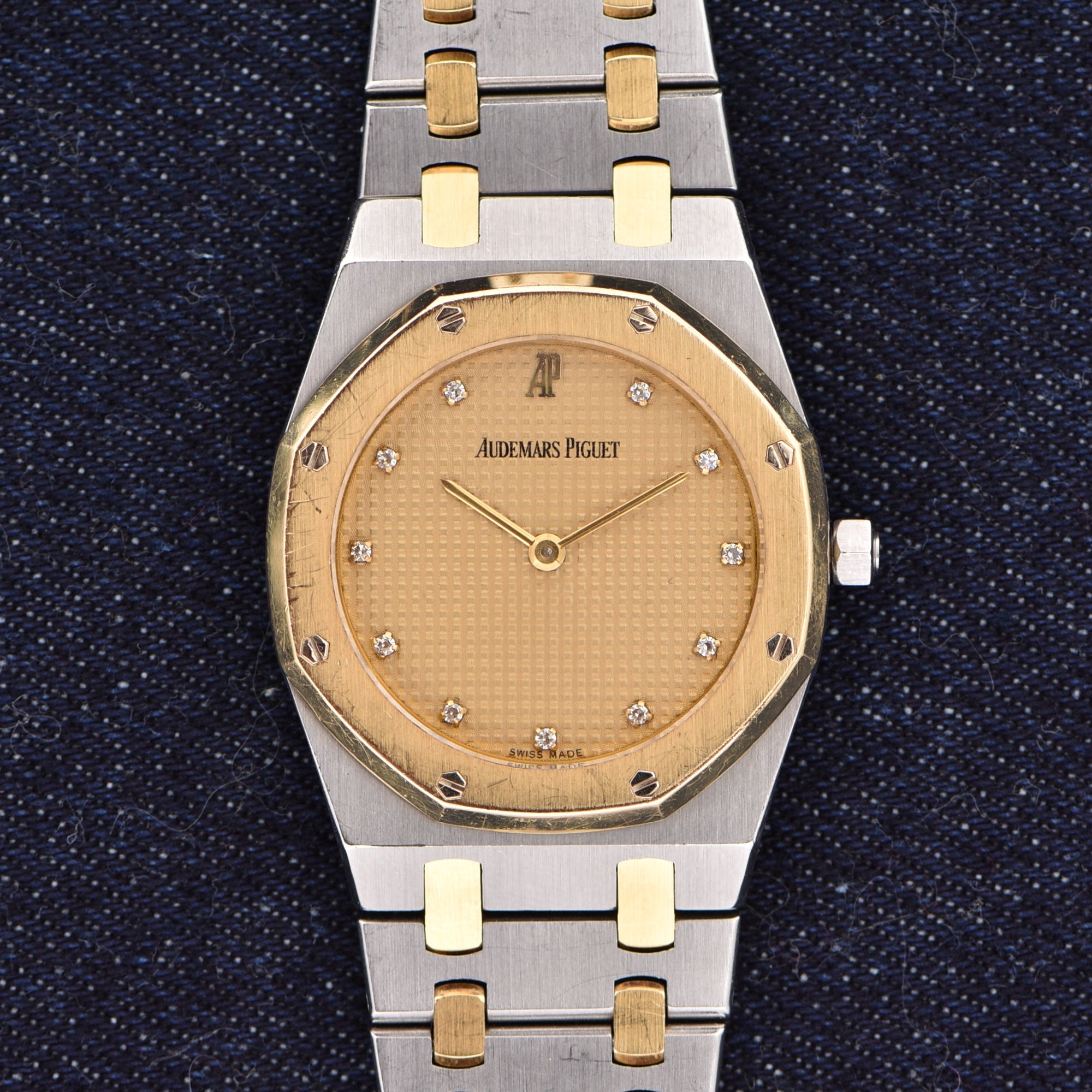
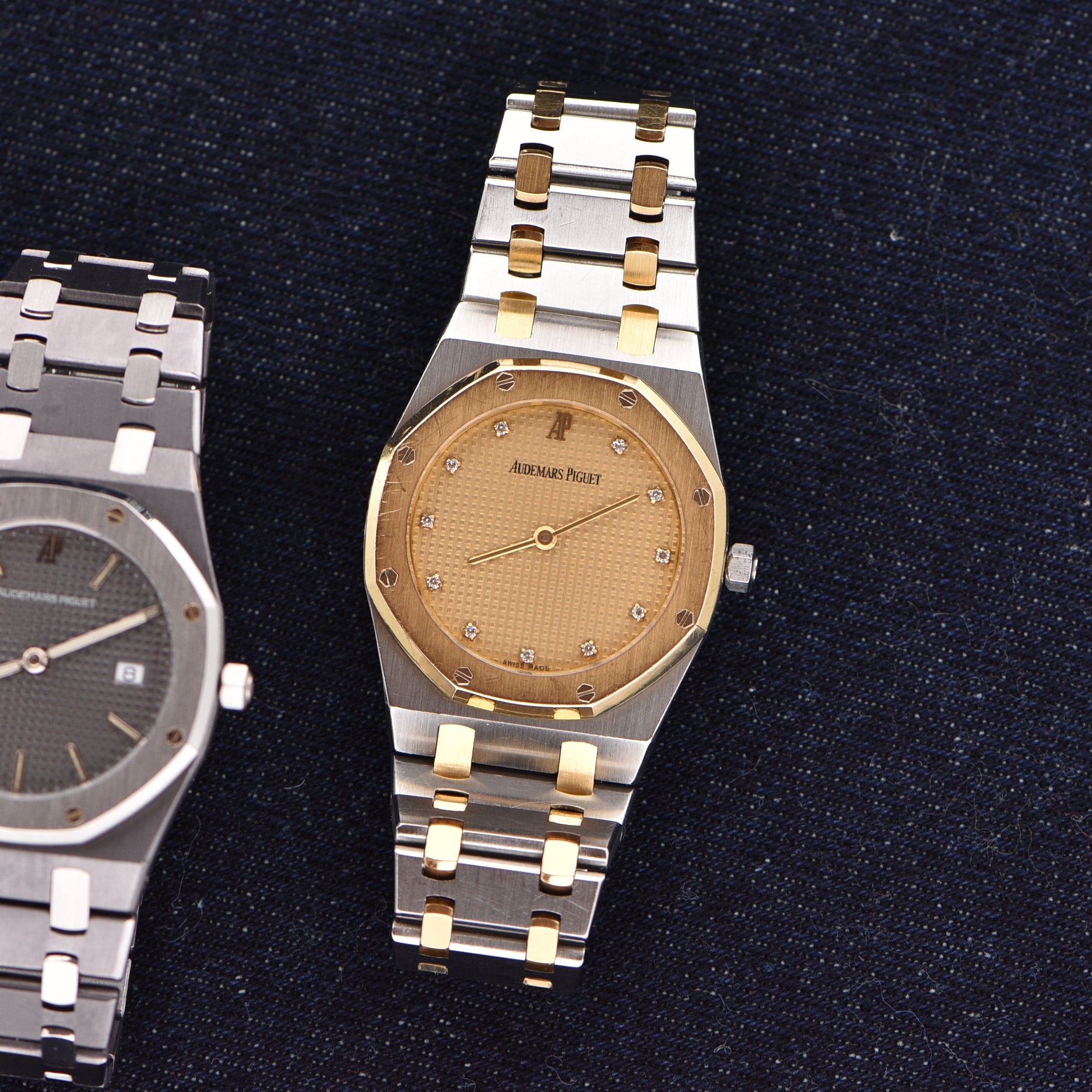
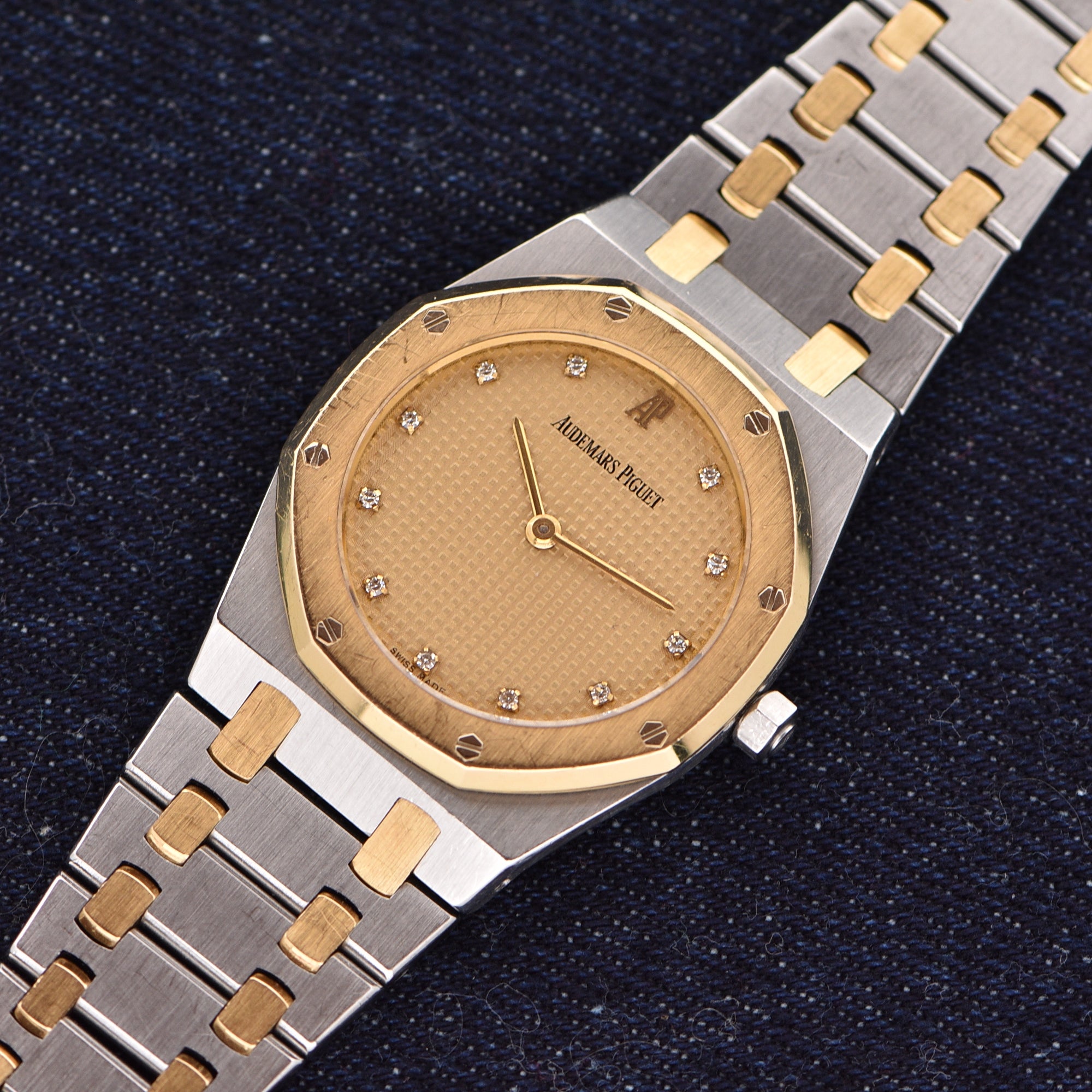
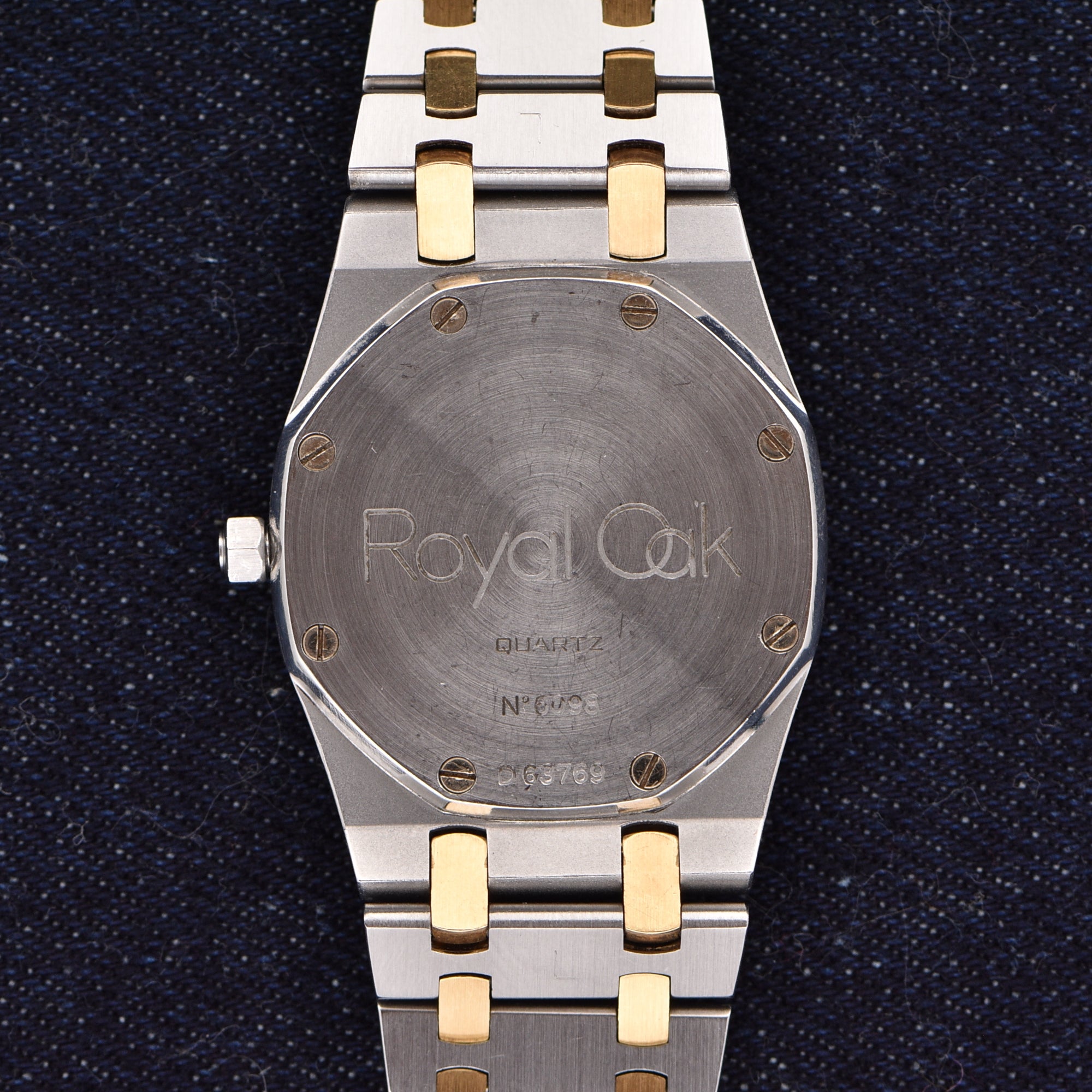
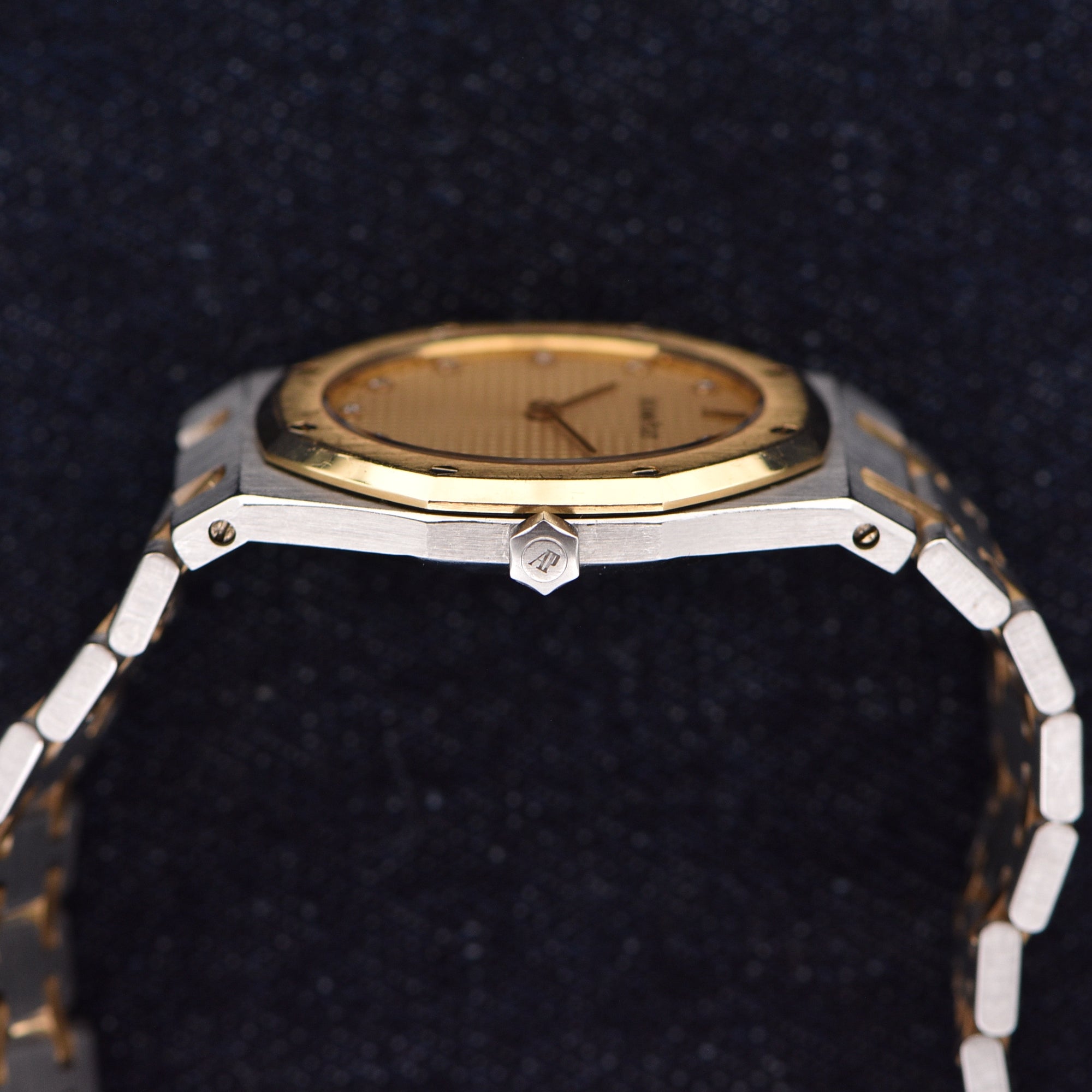

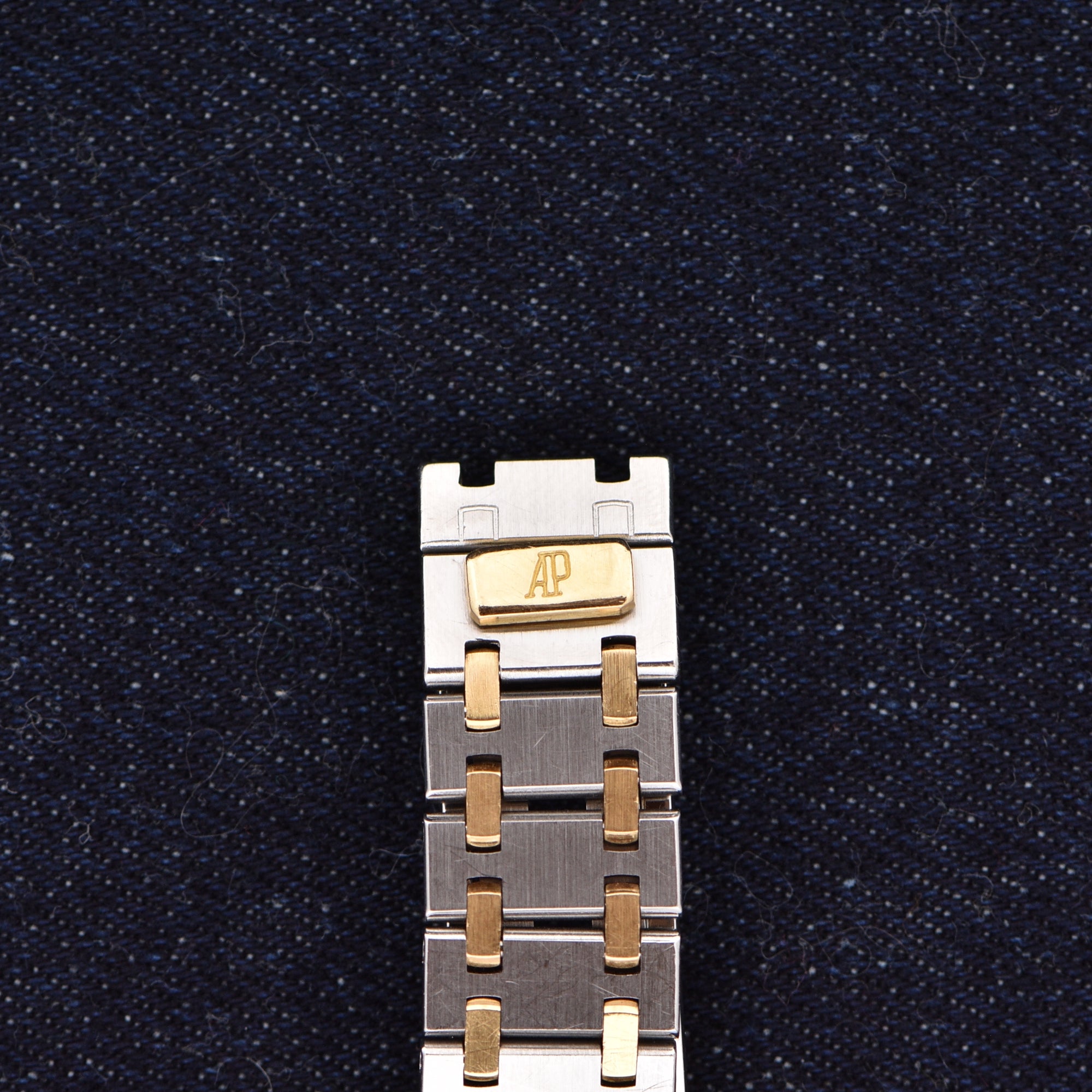

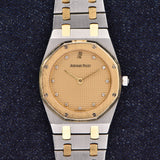

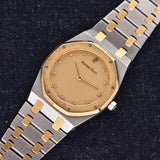
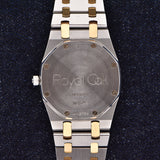
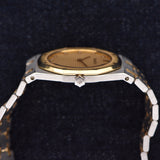


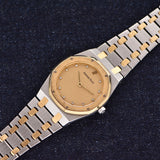
Audemars Piguet Royal Oak Factory Diamond Dial
- Reference 56303BA
- Watch Only
- Wire Price: $9,000
- Specifications
- The Story
- The Brand
Year: Circa 1990s
Model: Royal Oak
Case Diameter: 33mm
Lug to Lug: 40mm
Case: Two-tone
Dial: Champagne
Movement: Quartz
Condition
The case does have signs of wear throughout, mainly noticeable on the bezel. The dial is in great shape with factory diamond hour markers. The bracelet fits around a 7 1/4 inch wrist.
The Royal Oak, a luxury watch brand, began with the reference 5402ST in 1972. It was later expanded to A, B, C, and D serials, each with its own unique features. The A-series featured the "AP" initials above 6 o'clock, while the B, C, and D serials had the "Jumbo" designation. The Calibre 2121 movement powered the ref. 5402ST, a large watch with a date window. The Calibre 2120 was a joint project between Audemars Piguet, Patek Philippe, and Vacheron Constantin, and was developed by Jaeger-LeCoultre.
The Calibre 2120/2800 was a perpetual calendar movement that was later cased in a dressy metal timepiece called the ref. 5548. The ref. 5554 was the first quantieme perpetual-equipped AP, with a thinner case and 7.5mm thickness. The ref. 2120/2802 introduced a leap year indicator in 1993.
In 1993, AP debuted a riff on the Royal Oak from Emmanuel Gueit, featuring a 42mm case and a méga-tapisserie dial. The ref. 25721ST was a popular model, with celebrities like Arnold Schwarzenegger and Formula One drivers Michael Schumacher and Rubens Barrichello wearing it.
In 2002, Audemars Piguet debuted the Royal Oak Concept, a new watch designed from Alacrite 602, a hard material used in aeronautics. The concept was powered by the manually wound Calibre 2896, which included a tourbillon, power reserve indicator, and dynamographe. The concept showed that Audemars Piguet was willing to reinvent itself, pushing the boundaries of modern watchmaking continuously.
In 2012, Audemars Piguet introduced the ref. 15202, a reference that paid homage to the original ref. 5402ST. The ref. 15202 was updated with the "AP" signature above 6 o'clock in 2012, powered by the Calibre 2121 automatic movement. The ref. 15202IP was discontinued in 2022, marking the end of the Royal Oak's 50th anniversary.
Audemars Piguet and Piguet were working separately in the 1870s, with Audemars creating complicated watch movements for different manufacturers. After starting to work together in 1875, they continued this split function, with Audemars overseeing production and technical aspects and Piguet focusing on sales and management. The name Audemars Piguet & Cie was first used in 1881.
In 1892, the brand created the first-minute repeater wristwatch, followed by the Grand Complication pocket watch in 1899. Tragically, Audemars and Piguet passed away in 1918 and 1919, but the company continued to grow. The next generation of Audemars and Piguet, sons Paul Louis Audemars and Paul Edward Piguet, continued the legacy.
During the early-mid 1900s, the brand continued to push for innovation within the watch community. The thinnest pocket watch caliber was released in 1925, while the first skeletonized pocket watch was released in 1934. In 1946, the world's thinnest wristwatch was launched, and the first perpetual calendar wristwatch was released in 1957. The brand also holds the record for the first thinnest self-winding automatic caliber featuring a central rotor of 2.45mm in 1967.
In the 1970s, the quartz crisis affected traditional mechanical watchmakers, leading Audemars Piguet to partner with Swiss watch designer Gerald Genta to develop a new category of watches. The Royal Oak steel watch, introduced at the 1972 Swiss Watch Show, was made of stainless steel and had an integrated bracelet. The daring design of the case, featuring a round dial within an octagon bezel with 8 screws set inside a tonneau-shaped case, has become one of the most iconic and highly sought-after pieces.
Audemars Piguet Royal Oak Factory Diamond Dial
Authenticity Guaranteed
All our watches are carefully inspected to insure the authenticity of the watch
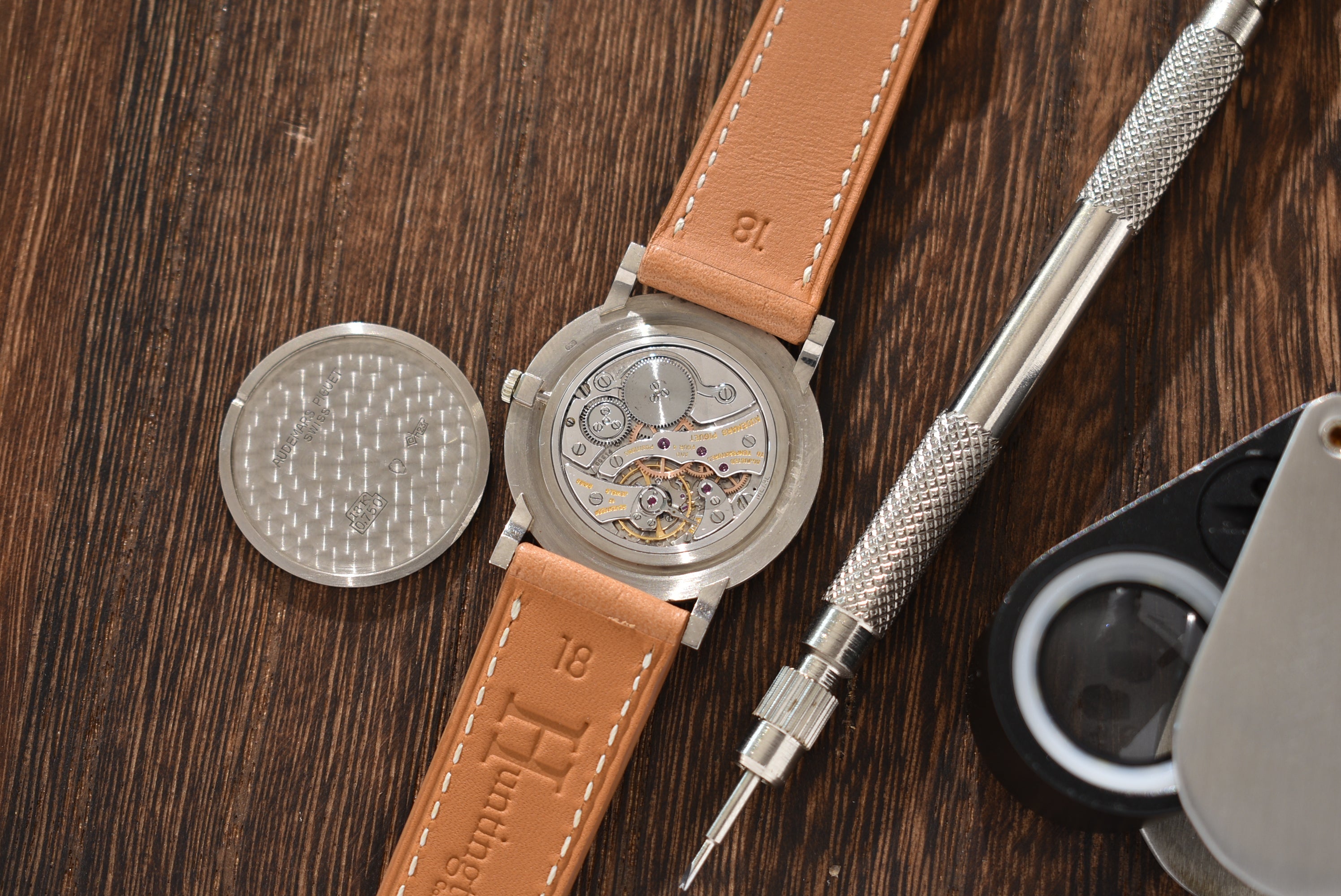
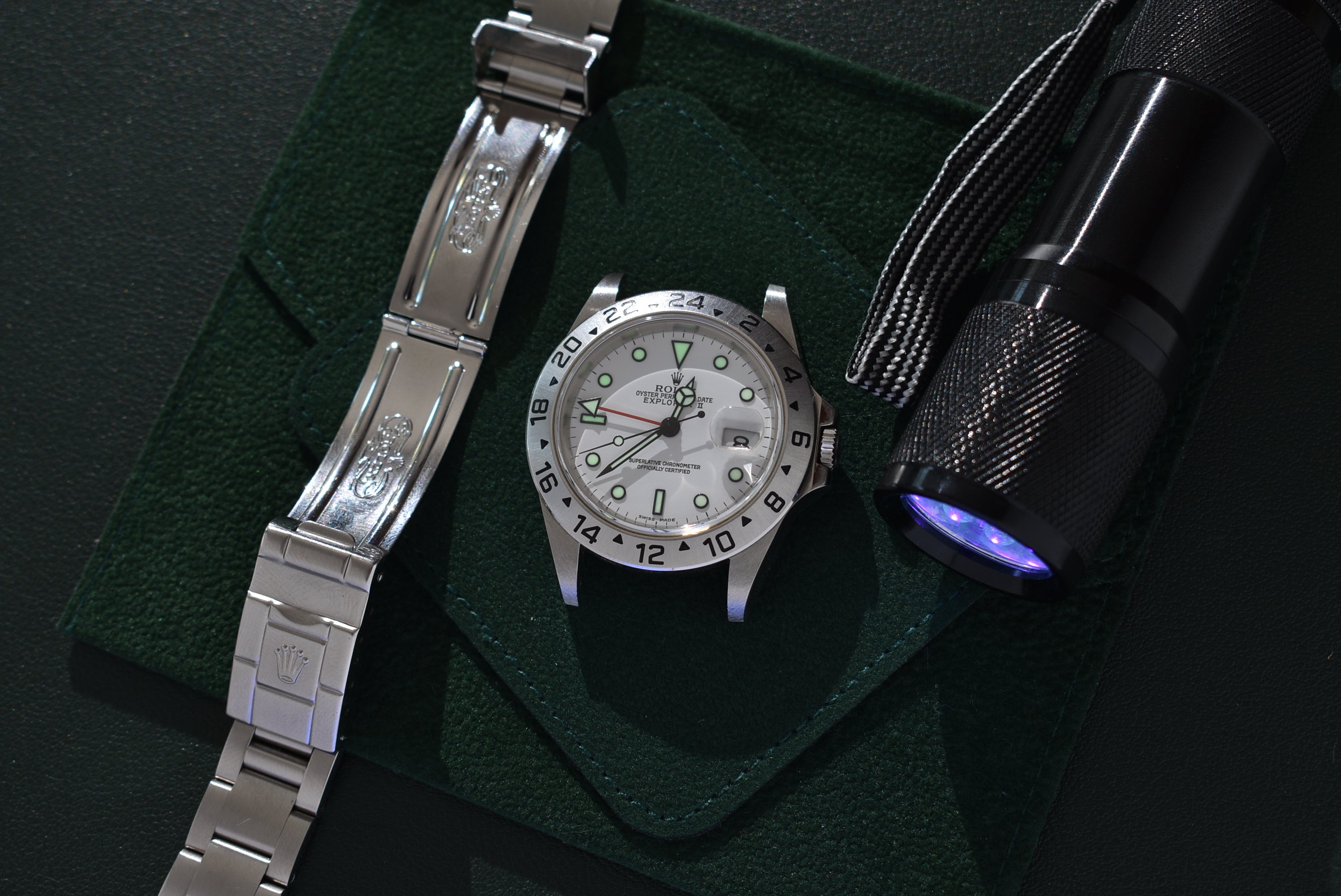
The Details
All our watches are scrutinized during inspection to make sure our descriptions are as accurate as possible.
- Related products
- Recently viewed
